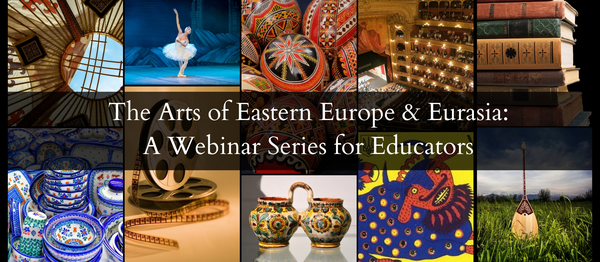
Teaching with the Arts Webinar: Russian Ballet
- Event Type
- Professional Development
- Sponsor
- Davis Center for Russian and Eurasian Studies, Harvard University; Center for Russia, East Europe, and Central Asia, University of Wisconsin-Madison; Center for Russian, East European & Eurasian Studies, University of Pittsburgh; Center for Russian, East European, & Eurasian Studies, University of Kansas; Center for Slavic, East European and Eurasian Studies, The Ohio State University; Center for Slavic, Eurasian and Eastern European Studies, University of North Carolina, Chapel Hill; Robert F. Byrnes Russian and East European Institute, Indiana University; & Russian, East European, and Eurasian Center, University of Illinois, Urbana-Champaign.
- Date
- Nov 19, 2025 5:30 - 7:00 pm
- Speaker
- Daria Khitrova (Professor of Slavic Languages and Literatures, Department of Slavic Languages and Literatures, Harvard University)
- Cost
- Free and open to the public
- Registration
- RSVP
- Contact
- Rachel Schmalz
- rschmalz@illinois.edu
- Views
- 32
During this session, we will learn about the Russian ballet as a powerful cultural force shaped by political, religious, and aesthetic pressures from the 19th to the 20th century. We will examine how ballet was viewed by critics, dancers, and administrators—as both an “impossible” art form and a near-religious practice of survival and expression. Educators will gain tools to connect performing arts with broader historical and cultural themes, enriching classroom discussions around artistic expression under authoritarian regimes, the role of tradition in modernity, and how art can serve both resistance and conformity.
A six-part webinar series is designed to help educators integrate the arts into their classrooms, with a focus on the diverse art forms of Russia, Eastern Europe, and Eurasia. Each 90-minute session will explore a different art form, including music, dance, literature, visual arts, cultural artifacts, and theater/film. Participants will learn about different art forms and practical strategies for incorporating them into their teaching, drawing on expert insights and resources from leading institutions. While the webinars are part of a cohesive series, educators are welcome to attend any or all of the sessions. Educators who participate in the entire series will be awarded 10 PDP (contact) hours. This series offers a unique opportunity to enrich your curriculum with creative and engaging resources from the Eastern European and Eurasian cultural tradition.